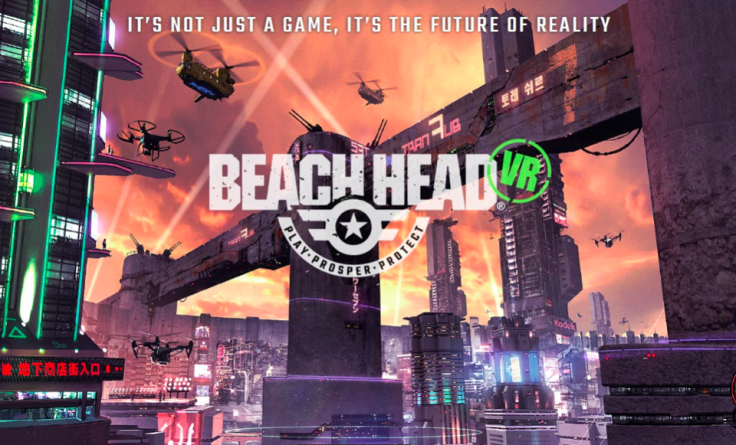Virtual Reality is About to Unlock a Disruptive New World of Possibilities

In 2016, Tesla CEO, Elon Musk nearly broke the Internet when he quipped that "there's a billion to one chance we're living in base reality." Speaking on the stage of Recode’s Code Conference, Musk noted that video game technology has advanced to create incredible VR simulations, and that it is only a matter of time before “games will become indistinguishable from reality."
Virtual reality is changing the face of commerce as the global economy continues on the path to complete digitalization. The constraints of the physical world have limited economic growth for too long, BeachHead is creating a blockchain-powered virtual reality in which anyone can prosper, make connections, take part in heart-pounding virtual reality gameplay, and explore compelling high-intensity entertainment.
When virtual reality meets physical reality
Second Life provided decent insights into how a merger of virtual reality and the physical world is likely to play out. Second Life, an online virtual world launched in 2003 provides users with a platform to interact with objects and places using virtual representatives of themselves called avatars. Users also transact business using a virtual currency called in the Linden Dollar. In 2007, $1 fetched $L267 and people were spending real money to buy virtual stuff.
In 2009, Second Life reported a total GDP of $557 million and its residents had gross earnings of about $55 million. Over the last several years, Second Life has recorded declines in the number of its users, GDP, resident earnings. As at 2017, there were still about 800,000 active users who spend up to 12 hours a day in Second Life. According to Wired, “For them, the fevered fantasies of a decade ago have become reality: Second Life is where they live.”
Beachhead provides a platform to do much more with virtual reality
Over the last couple of years, Second Life has seen a gradual decline in its userbase, engagement, and economy. In fact, Second Life is now home to an aging population whereas millennials, Gen X and Gen Y tend to favor social media platforms such as Facebook, Instagram, and Snapchat.
BeachHead City, created by team led by the renowned gaming entrepreneur, Pepe Moneor and Alexis Sirika, is building momentum to take off from where Second Life had faltered.
BeachHead City is simply an interesting new world, without predefined objectives and in which users have the power to build from scratch. The end game is the hope that players will create a fun and unique experience for the people. Beyond being a game, BeachHead City merges virtual reality gameplay, ecommerce, and the real estate market to create a new world economic powerhouse with an all-immersive alternative reality.
BeachHead is providing a state-of-the art platform that enables individuals to thrive and create wealth through asset purchases, e-commerce, and rewards in simulations layered on physical world experiences. Players can build reputations in BeachHead City and be sure that the reputation and clout will follow them into the physical world. Conversely, brand reputation in the physical world could be leveraged to build a stronger brand recognition in BeachHead City’s VR world.
Unlike Second Life where players can only open shops for their avatar in the game; in BeachHead City, the stuff you make can be bought in the real world. Hence, you can earn money from tokens you earn selling stuff in VR and cash out the tokens as fiat in the real world.
How virtual reality could open new worlds of possibility
Virtual reality is the next layer of disruption that will change the face of business beyond the levels of disruptions that the Internet brought into the business environment over the last two decades. Businesses taking part in BeachHead City can sell VR version of products and services in the city and leverage their physical brand recognition to sell in the VR world.
In addition, Startups and businesses that are finding it somewhat difficult to compete effectively with bigger brands in the physical world could also leverage their nimbleness to take the lead in building a strong brand recognition in the VR world. Interestingly, the VR world is gradually becoming more interwoven with the physical worlds; hence, brands that have built up a strong following in virtual reality can expect to start seeing an uptrend in their physical brand value.
Secondly, technology is causing unprecedented levels of automations and thousands of jobs are being lost as many human roles start to lose relevance. The uptrend in job losses is likely to continue over the next 10 to 20 years and people who don’t know how to code or function in an automated world will continue to find themselves in urgent need of retraining.
A thriving VR economy co-existing with the traditional physical economy could be an interesting way to counterbalance the rate of job loss; or at the very least, provide some cushion to people who can’t seem to find jobs in the physical world. For instance, people would be able to generate new streams of income from offering their services or selling stuff in a VR world by working from the comfort of their homes.
Final words…
As virtual reality continues on the path to mainstream adoption, we can expect to see more interesting use-cases of VR in business. An exhilarating alternative reality will open to those who dare to venture into a dimension where opportunities are real and accessible to everyone. Interestingly, the physical world will could potentially start to feel overcrowded and stifling as life becomes more digital; virtual reality could break down the spatial barriers to birth a truly borderless world.





















